Net Zero Plastic is a joint venture development between CO2 Global and our US-based partner Yankee Scientific where we promote a new strategy for plastic waste management to address shortfalls regarding the unaccounted for fate of non-recyclable plastics in the Circular Economy.
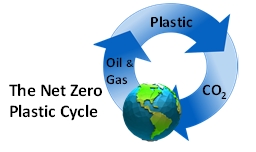
Current industry and consumer focus on recycling, re-use and using alternatives to plastics, are good strategies for minimizing plastic waste through a more efficient and sustainable product value chain. However, unfortunately it does not address the reality and true scale of the problem. There will continue to be hundreds of millions of tons plastic materials produced in the future that will not be part of the circular recycling economy.
We argue that plastics is a hydrocarbon that should only be deemed to have recycled when the carbon is placed back underground where it originated from. To achieve this we advocate that all non-recyclable plastic has brand value when incinerated and the CO2 is captured and sequestered underground to offset an equivalent volume of produced plastics. In this way we create Net Zero Plastic pollution while fully utilizing the chemical and thermal capacity of the extracted hydrocarbons.
 Our goal is to demonstrate that we can build upon the circular economy in a way that will monetize non-recyclable plastics — a waste commodity that currently has no value — and incentivize clean-up of landfills and ocean-based plastics that are already too degraded for recycling.
Our goal is to demonstrate that we can build upon the circular economy in a way that will monetize non-recyclable plastics — a waste commodity that currently has no value — and incentivize clean-up of landfills and ocean-based plastics that are already too degraded for recycling.
To initiate this process we are also promoting development of mobile apps that shall help individuals, consumers, entrepreneurs, educators and policy makers to participate, register and realize the complete potential of the non-recyclable plastic value chain. We consider this to be an important first-step in developing the logistics that will feed into our incineration facilities and capture the plastic-based CO2.
Since first being introduced in the 1950s, about 8.3 billion tons of plastic has been produced. Over three-quarters of this has to-date been discarded as waste in landfills along with an estimated 150 million tons into the oceans.
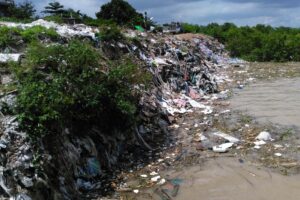
The scale of the problem is simply staggering: global production is around 380 million tons per annum and growing at four percent annually.
Despite the industry having an extensive focus on sorting and recycling, there is growing recognition that a large proportion (~50%) will remain outside of the circular economy. That will be over 250 million tons each year by 2040!
Indeed, there are currently no practical and scalable solutions to dispose of plastics without adding to environmental and climate-change concerns.
Nearly all plastics is made with hydrocarbons from oil and gas that has been trapped in geologic formations for millions of years. Our solution is therefore to recycle the carbon in plastic back to where it came from. For every pound of plastic produced, we will permanently eliminate from the environment an equal amount of plastic waste. That is how we get to Net Zero Plastic pollution.
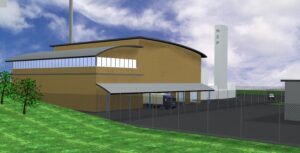 Using proven technology we shall collect, sort and incinerate the non-recyclable plastic waste in our distributed NZP Capture facilities. We then gather the carbon dioxide (CO2) from multiple facilities into a pipeline infrastructure and transport to a suitable remote location for injection into deep underground geologic formations.
Using proven technology we shall collect, sort and incinerate the non-recyclable plastic waste in our distributed NZP Capture facilities. We then gather the carbon dioxide (CO2) from multiple facilities into a pipeline infrastructure and transport to a suitable remote location for injection into deep underground geologic formations.
Our solution has zero emissions to the atmosphere and its cost will be a small fraction of the value of the plastic. Also, it is more sensible to remove non-recyclable plastic waste as CO2 into a pipeline than as solid bulk transported on already congested urban highways.
The component technologies are available and already in use at a larger scale in other applications around the world. We are currently undertaking the preliminary cost and engineering studies for a modularized plant that is scalable and compatible with deployment within urban areas to enable efficient collection and sorting of the plastics.
With our patented eco-branding financing model we also identify a commercialization pathway to gather and remove existing plastics with everyone being accountable but without undermining the industry focus on improved efficiency, reuse, circularity and benefits that plastic brings to us all.
It’s a simple and comprehensive strategy that fits the magnitude of the problem. You can read more about this here as we develop these sections of our website.
We have observed that within the concept of a Circular Economy there is no realistic accounting for the non-recyclable component of plastic waste. This would appear to be an elephant in the room that is hoped will go away, but which by most estimates will continue to represent around half of all plastics in use. This was highlighted by the WWF Report (2019) that also addressed the issue of accountability.
Our conclusion is simply that even if recycling, re-use and alternatives can improve from around 20 percent today to an optimistic but targeted 50% by 2040, we will still have at least 250 million tons plastic per year that is discarded. This is more than twice our existing managed landfill capacity.
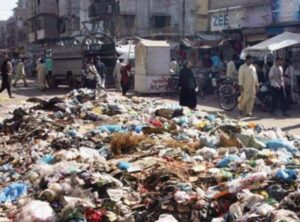 Clearly there will be limited beneficial impact on the street level. And we need a sustainable strategy that keeps this non-recyclable plastics out of our environment and oceans, and does not contribute to the even greater concerns of greenhouse gas emissions and climate-change
Clearly there will be limited beneficial impact on the street level. And we need a sustainable strategy that keeps this non-recyclable plastics out of our environment and oceans, and does not contribute to the even greater concerns of greenhouse gas emissions and climate-change
Our view is that the consumer and the environment deserves a better deal than what is presented. We need not forsake the benefits and convenience of plastics, nor do we want to experience the guilt of wantonly polluting our environment. There is no logic in banning plastic bags when a paper or jute bag has a greater overall cost to the environment. There is no sense in not using plastic packaging that efficiently protects and reduces food wastage and has a lower carbon footprint than alternatives. Our bottom line is therefore fix the problem not the product!
The problem is the systematic breakdown of accountability and lack of a prescribed solution for final management. This is well summarized in the schematic below;

The schematic draws an unfortunate reality where no one is responsible and there are no incentives, rules nor guidelines for end-of-life accountability. Furthermore, only a few plastics qualify to be part of the recycled Secondary Markets. Indeed experience from Europe shows that only 40% of plastics initially designated for recycling is recycled. The remainder is de facto non-recyclable with an unaccounted for fate.
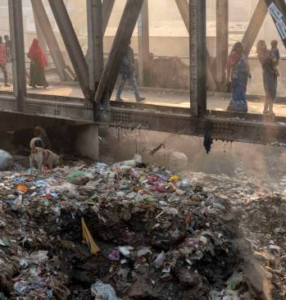 The extent to which reality has overtaken our ability to react is evident with the growing global plastic pollution. The adjacent image of the pedestrian walkway and plastic waste burning at the side of Burigonga River in Kamrangirchar, Bangladesh is no exception but simply representative of reality for many.
The extent to which reality has overtaken our ability to react is evident with the growing global plastic pollution. The adjacent image of the pedestrian walkway and plastic waste burning at the side of Burigonga River in Kamrangirchar, Bangladesh is no exception but simply representative of reality for many.
Well meaning, good intentioned projects to remove, recycle, restrain or ban plastics are promoted throughout social media. But the industrial indicators and consumer behavior tells another story. Investment in virgin production capacity remains significant while availability of cheap natural gas reduces the costs and our incentive to recycle. This is a slow motion train where the wreck is still somewhere over the horizon but the outlook is already ominous.
Our solution to address these issues is described further here.
We argue that plastics should be no different than any other hydrocarbon resource, and its final destiny belongs not in a circular loop that spills into the environment, but deep in the ground where it originally came from. This is also the crux of CCS.
By all means, society must reuse and recycle for as long as it makes commercial and environmental sense to do so, but throughout include the final cost of capture, storage and sequestration. This is the Holistic Carbon Economy that is applicable for all hydrocarbons.
Furthermore, we are now tackling a multidisciplinary challenge that requires a combination of technology, logistics, fiscal incentives and societal understanding.
Photo shows the Petra Nova Carbon Capture Project at WA Parish coal-fired power plant nr. Houston, Tx. The plant captures 1.6 million tons CO2 annually that is used for enhanced oil recovery.
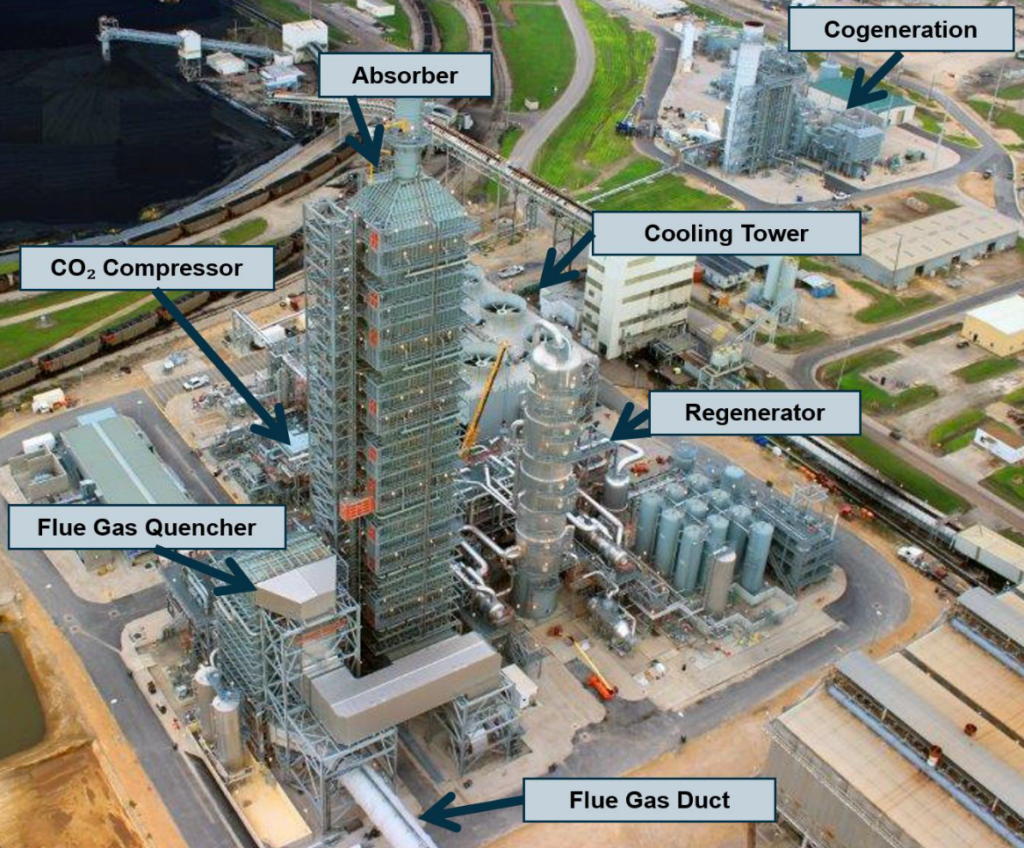
The WA Parish facility is three times larger than what we propose as being optimal for the distributed NZP Capture facilities.
We do not see issues regarding commercial deployment for CO2 capture technology, this has been demonstrated commercially at a scale greater than what will be required for our proposed NZP facilities.
We also maintain that smaller distributed CCS incineration plants with zero emissions and power generation will complement the circular economy while building on existing infrastructure and creating value for non-recyclable plastics.
The key challenges are therefore logistics, fiscal incentives and societal understanding.
You may read our NZP Strategy under the Strategy tab on this page.

We believe that the present industry and consumer focus on recycling, re-use and alternatives, while good strategies for minimizing plastic waste through a more sustainable circular economy, are not strategies that address the penultimate fate of the hundreds of millions of tons of plastic materials that will continue to be produced in the future, especially in a world concerned about carbon emissions.
Without extraordinary efforts, the simple fact is that plastic materials, and the carbon contained in them, are not infinitely recyclable. Over time, ultimately the great majority of virgin plastics produced will become waste. An economically viable end-game for plastics and plastic waste is needed in order to have a sustainable long-term strategy.
 We argue that plastics is a hydrocarbon that should be deemed to have been fully recycled only when the contained carbon is returned permanently deep underground to where it originated.
We argue that plastics is a hydrocarbon that should be deemed to have been fully recycled only when the contained carbon is returned permanently deep underground to where it originated.
Furthermore, the benefits of plastics produced from fossil hydrocarbons to consumer safety, health and convenience, are undeniable and should not be easily abandoned. Our strategy offers an affordable, practical and comprehensive solution to the waste problem.
We advocate that the plastic product value chain, by use of an environmental offset branding strategy, can support the responsible and permanent elimination of plastic waste by incineration combined with CO2 capture and geologic sequestration to offset an equivalent volume of newly produced plastics.
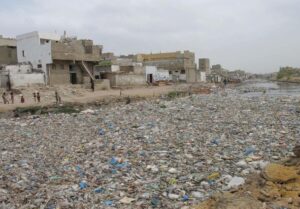 This process can be powered by the energy contained in the plastic waste itself. In this way, we can create Net Zero Plastic pollution, with regard to both the environment and any associated CO2 emissions into the atmosphere; while also fully utilizing the chemical and thermal capacity of the extracted hydrocarbons for the continued benefit of society.
This process can be powered by the energy contained in the plastic waste itself. In this way, we can create Net Zero Plastic pollution, with regard to both the environment and any associated CO2 emissions into the atmosphere; while also fully utilizing the chemical and thermal capacity of the extracted hydrocarbons for the continued benefit of society.
To initiate our strategy for plastic waste management and handling, we are promoting development of mobile applications that shall help individuals, consumers, entrepreneurs, educators and policymakers to understand the full potential of this new holistic value chain for plastics that encompasses both circularity and sequestration.
The apps will create awareness for our eco-branding concept; connect all stakeholders; facilitate transactional payments between parties and develop the logistics so that plastics is efficiently gathered and sorted through the NZP facilities. By giving all plastics a value, either for circular re-use or destined for incineration and sequestration, there will be very little leakage into the environment.
 Our vision monetizes all plastics through eco-branding and therefore also creates commercial incentives to clean-up landfills and promote large-scale gathering of ocean-based plastic that is already too degraded for recycling.
Our vision monetizes all plastics through eco-branding and therefore also creates commercial incentives to clean-up landfills and promote large-scale gathering of ocean-based plastic that is already too degraded for recycling.
Lastly, we believe these incentives will also benefit the stakeholders and young entrepreneurs at the bottom end of the value chain, who until now have been unfairly compensated for their labor, working conditions and lost opportunities — they especially deserve a better deal!
post@co2.no
We will get back to you within 24-hours.
Goneveien 130
3145 Tjøme
NORWAY